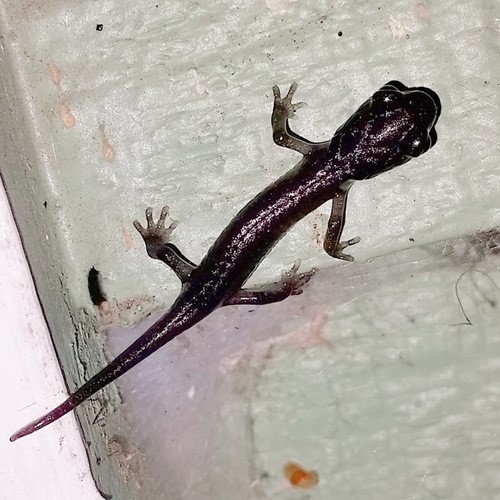Arboreal salamander
A species of Climbing salamanders Scientific name : Aneides lugubris Genus : Climbing salamanders
Arboreal salamander, A species of Climbing salamanders
Scientific name: Aneides lugubris
Genus: Climbing salamanders
Content
Description People often ask General Info
 Photo By lemurdillo , used under CC-BY-NC-ND 4.0 /Cropped and compressed from original
Photo By lemurdillo , used under CC-BY-NC-ND 4.0 /Cropped and compressed from original Description
The arboreal salamander (Aneides lugubris) is a species of climbing salamander. An insectivore, it is native to California and Baja California, where it is primarily associated with oak and sycamore woodlands, and thick chaparral.
People often ask
General Info
Lifespan
10-15 years
Diet
Arboreal salamander feeds mainly on small invertebrates, particularly arthropods. It is an opportunistic feeder, with a preference for ants, beetles, and spiders, making up a significant part of its diet.
Appearance
Arboreal salamander is a salamander with a slender body, roughly 6.5 to 8 cm long. Its skin is smooth, wet and rubbery to the touch. Arboreal salamander is typically uniformly dark brown to black, often with tiny yellow spots across the body and tail. Tail is long, and it lacks any discernible features like horns or wings. There are no significant differences between males, females, or different life stages in terms of color or pattern.
Behavior
Arboreal salamander is a nocturnal arboreal species known for its climbing agility and vertical posture. Typically solitary, they exhibit territorial behavior, defending their space through physical displacement. Arboreal salamander's adaptive behavior includes a unique skin-sloughing process, which allows them to remove and consume their skin after shedding.
Population
Stable
Scientific Classification
Phylum
Chordates Class
Amphibians Order
Salamanders Family
Lungless salamanders Genus
Climbing salamanders Species
Arboreal salamander